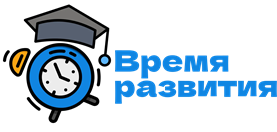Автор: Zhumabayeva Aruzhan Azamatovna
«Multimedia technologies in foreign language communicative competence development for basic stage students of secondary school»
Aruzhan Zhumabayeva
Pedagogical Faculty of Foreign Languages, Kazakh Ablai Khan University of International Relations and World Languages, Almaty, Kazakhstan
Abstract
This study examines the role of multimedia technologies in foreign language teaching, focusing on their benefits and challenges across various educational contexts. Based on structured interviews with teachers, findings reveal that multimedia tools significantly enhance students’ listening, speaking, and communicative skills, particularly through authentic and interactive materials. However, challenges such as limited access to technology, preparation time, and adapting materials for diverse proficiency levels remain. Despite these obstacles, the study highlights the transformative potential of multimedia in creating dynamic and engaging learning environments and offers recommendations for effective integration in foreign language education.
Key words:
Multimedia technologies, foreign language teaching, communicative competence, language proficiency, authentic materials, educational challenges, student engagement, interactive learning, digital tools, secondary education.
Introduction
The integration of multimedia technologies into foreign language teaching has revolutionized the field, providing innovative methods to enhance communicative competence. Since the 1980s, advancements in computer technologies have influenced foreign language teaching, leading to the development of methodologies that combine theoretical and practical approaches to their use. These technologies are now indispensable in the modern classroom, offering tools to make language learning more engaging and effective.
In Kazakhstan, the rapid growth of the ICT sector reflects the increasing demand for digital education services, a trend accelerated by the COVID-19 pandemic (ICT Market of Kazakhstan, 2023). Various tools—such as computers, interactive whiteboards, tablets, and smartphones—are utilized in classrooms, collectively termed «multimedia and digital technologies.» These tools enable the presentation of information in multimedia formats, incorporating text, graphics, video, audio, and interactive elements.
Government initiatives have emphasized the importance of educational informatization, as outlined in the amendments to Article 5 of the Law of the Republic of Kazakhstan «On Education» (2022). However, the theoretical understanding of these technologies often lags behind their practical application, particularly in the context of secondary education. Existing research predominantly focuses on adult learners (Muldakhmetov & Gazaliev, 2022), despite the critical developmental stage represented by school-age learners, as highlighted by L.S. Vygotsky, D.B. Elkonin, and L.I. Bozhovich. This gap necessitates an exploration of strategies tailored to younger learners, who are particularly motivated by digital and multimedia tools.
Multimedia technologies like CALL (Computer Assisted Language Learning), TELL (Technology Enhanced Language Learning), ICT, and MALL (Mobile Assisted Language Learning) provide diverse approaches to enhance language acquisition. These methods employ tools such as videos, audio recordings, interactive exercises, and online platforms to develop communicative competence in real-life contexts (Bovtenko, Garcov, Elnikova et al., 2006). The use of mobile devices in MALL, for instance, offers flexibility, enabling students to access language resources anytime and anywhere, which is especially beneficial for secondary school students.
This article aims to explore the integration of multimedia and digital technologies in foreign language teaching for basic stage students of secondary school. It seeks to address the research gap by examining how these technologies can enhance student engagement, motivation, and cognitive development while aligning with the developmental and psychological characteristics of younger learners.
